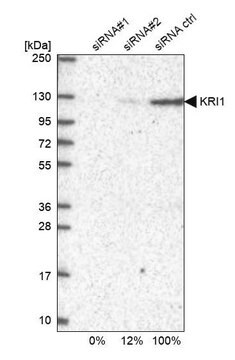SMB00703
Tetraacetylphytosphingosine
≥98% (HPLC)
Synonym(s):
N-[(1S,2S,3R)-2,3-bis(acetyloxy)-1-[(acetyloxy)methyl]heptadecyl]-acetamide, TAPS
Sign Into View Organizational & Contract Pricing
All Photos(3)
About This Item
Empirical Formula (Hill Notation):
C26H47NO7
CAS Number:
Molecular Weight:
485.65
UNSPSC Code:
12352211
NACRES:
NA.25
Recommended Products
Quality Level
Assay
≥98% (HPLC)
form
solid
mp
46 °C
solubility
ethanol: ≤25 mg/mL
lipid type
sphingolipids
storage temp.
−20°C
Biochem/physiol Actions
Tetraacetylphytosphingosine (TAPS) is a sphingolipid metabolite produced by Wickerhamomyces ciferrii (also known as Hansenula ciferrii). It exerts an inhibitory action on angiogenesis through inhibition of the mitogen-activated protein kinase (MAPK) pathway and intracellular calcium increase. Therefore, TAPS was suggested as a potential treatment for angiogenesis related disorders such as arthritis, cancer and psoriasis.
TAPS was found to induce apoptosis in HaCaT human keratinocyte cells. In addition, it was demonstrated that TAPS synergistically increases UVB-induced apoptosis via caspase activation by regulating the level of pro-apoptotic Bax and anti-apoptotic Bcl-2 in HaCaT cells.
TAPS was found to induce apoptosis in HaCaT human keratinocyte cells. In addition, it was demonstrated that TAPS synergistically increases UVB-induced apoptosis via caspase activation by regulating the level of pro-apoptotic Bax and anti-apoptotic Bcl-2 in HaCaT cells.
Other Notes
Due to the low transition temperature of tetraacetylphytosphingosine, the product may be a semi-solid at room temperature.
Storage Class Code
11 - Combustible Solids
WGK
WGK 3
Flash Point(F)
Not applicable
Flash Point(C)
Not applicable
Certificates of Analysis (COA)
Search for Certificates of Analysis (COA) by entering the products Lot/Batch Number. Lot and Batch Numbers can be found on a product’s label following the words ‘Lot’ or ‘Batch’.
Already Own This Product?
Find documentation for the products that you have recently purchased in the Document Library.
Customers Also Viewed
Yoo Bin Kwon et al.
Experimental dermatology, 16(4), 311-317 (2007-03-16)
In a search for the wound healing accelerators, we found that tetraacetyl-phytosphingosine (TAPS), a sphingolipid metabolite produced by phytosphingosine acetylation, has significant inhibitory potential on healing of rabbit ear wound. As angiogenesis is fundamental to proper wound healing, we examined
H J Kim et al.
Apoptosis : an international journal on programmed cell death, 9(4), 449-456 (2004-06-12)
Inappropriate apoptosis results in the epidermal hyperplasia as in psoriasis and UVB irradiation has been successfully used to treat this kind of skin disorders. Previously, we reported that the novel phytosphingosine derivative, tetraacetyl phytosphingosine (TAPS) induced apoptosis in HaCaT cells.
Studies on the production of sphingolipid bases by the yeast, Hansenula ciferri.
M L Greene et al.
Biochimica et biophysica acta, 98(3), 582-588 (1965-06-01)
Our team of scientists has experience in all areas of research including Life Science, Material Science, Chemical Synthesis, Chromatography, Analytical and many others.
Contact Technical Service










